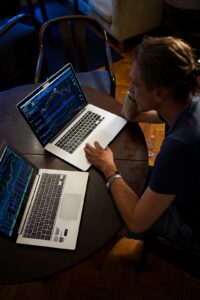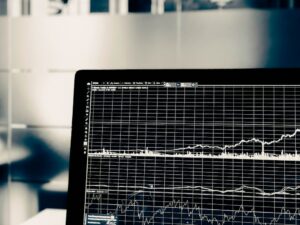The Role of Leverage in 1 Pip Forex Trading
Forex trading has become increasingly popular in recent years, with many individuals looking to take advantage of the opportunities it presents. One key aspect of forex trading that traders need to understand is leverage. Leverage plays a significant role in forex trading, and it can greatly impact the profitability and risk of a trade.
In simple terms, leverage is a tool that allows traders to control larger positions in the market with a smaller amount of capital. It is essentially borrowing money from a broker to trade larger positions than what would be possible with the trader’s own funds alone. Leverage is typically expressed as a ratio, such as 1:100 or 1:500, indicating the amount of leverage provided by the broker. The first number represents the trader’s investment, while the second number represents the amount of borrowed funds.
One pip is the smallest unit of movement in a currency pair, typically measured to the fourth decimal place. For example, if the EUR/USD currency pair moves from 1.2000 to 1.2001, it has moved one pip. When trading with leverage, the impact of a one pip movement can be magnified, leading to potential profits or losses.
To understand the role of leverage in 1 pip forex trading, let’s consider an example. Suppose a trader decides to open a position in the EUR/USD currency pair with a leverage of 1:100. The trader invests $1,000 of their own capital and borrows $99,000 from the broker. With a leverage of 1:100, the trader now controls a position size of $100,000.
If the trader’s prediction is correct and the currency pair moves by one pip in their favor, they stand to make a profit. In this example, if the trader is long on the EUR/USD and the price moves from 1.2000 to 1.2001, they would make a profit of $10. This is calculated by multiplying the position size ($100,000) by the pip value (0.0001) and the leverage (1:100).
On the other hand, if the trade goes against the trader and the currency pair moves by one pip in the opposite direction, they would incur a loss. In the same example, if the price moves from 1.2000 to 1.1999, the trader would lose $10. It is important to note that leverage not only amplifies potential profits but also increases the potential losses.
While leverage can enhance potential gains, it also exposes traders to higher risks. The higher the leverage, the smaller the price movement required to trigger a margin call, which is a situation where the trader’s losses exceed their account balance, leading to the closure of the position. It is crucial for traders to carefully manage their risk and set appropriate stop-loss orders to protect their capital.
It is worth noting that leverage is not mandatory in forex trading. Traders can choose to trade with lower leverage or even without leverage at all, using only their own capital. However, leverage can be a useful tool for those looking to maximize their trading opportunities and make the most of the 1 pip movements in the forex market.
In conclusion, leverage plays a significant role in 1 pip forex trading. It allows traders to control larger positions with a smaller amount of capital, amplifying both potential profits and losses. Traders need to understand the risks associated with leverage and implement appropriate risk management strategies to protect their funds. By carefully considering the role of leverage and its impact on 1 pip movements, traders can make informed decisions and potentially enhance their trading performance.





